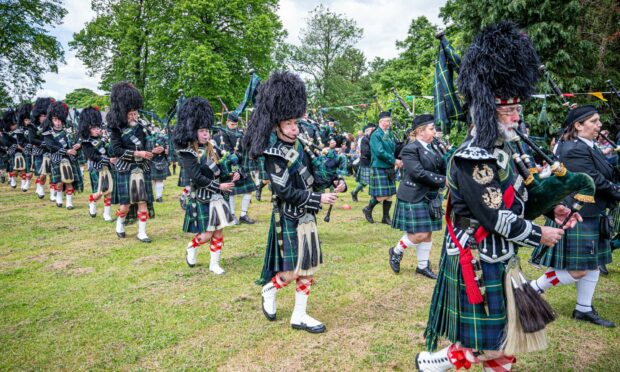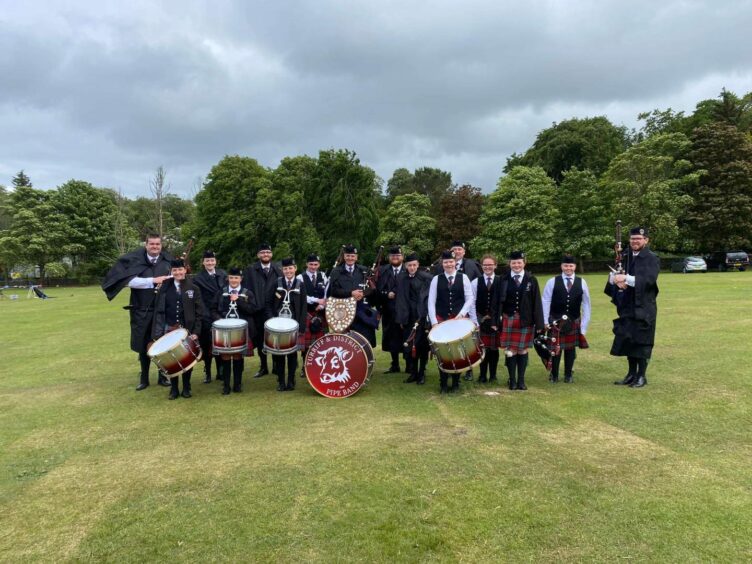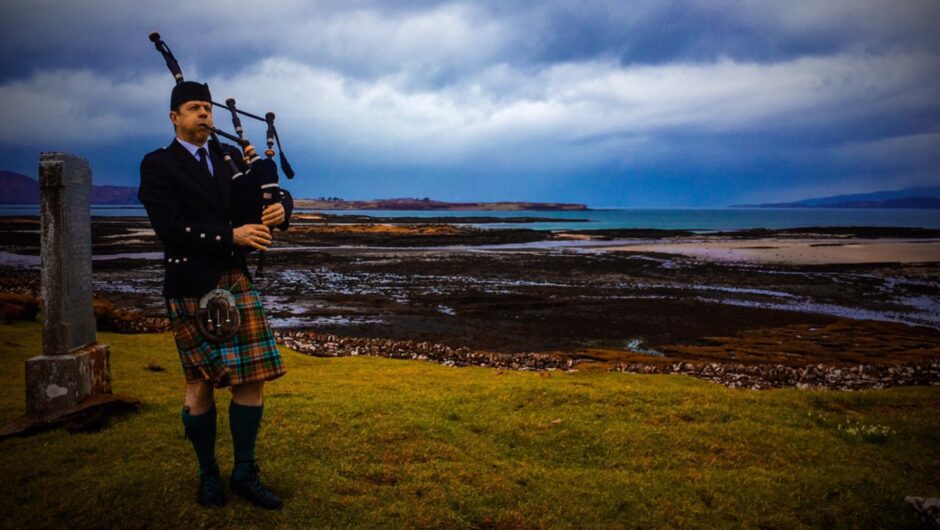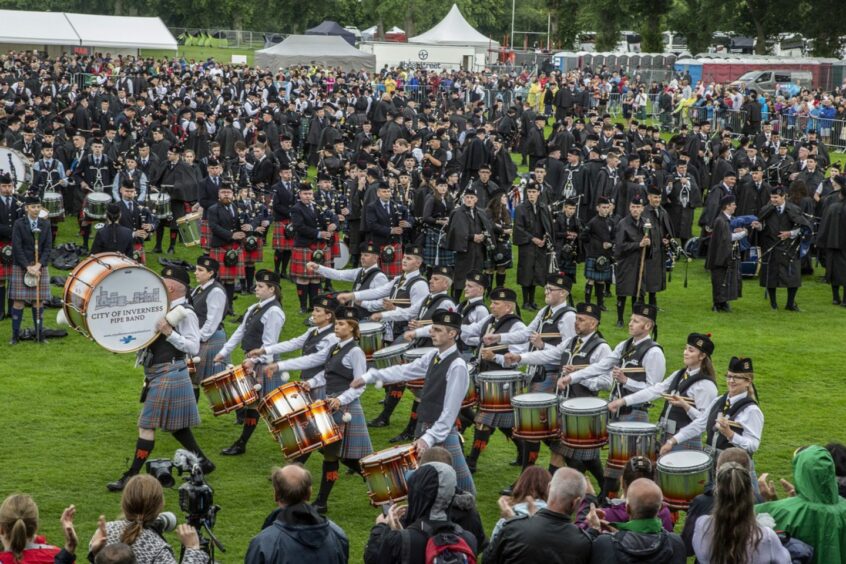The sound of the bagpipes is a much-loved tradition at the Highland Games.
From the mass bands entertaining guests throughout the day to solo and band competitions – the pipes are an integral part of the games.
For some pipers, the season will be the first time they have competed in almost three years.
The Aberdeen Highland Games on Sunday was the first event for Turriff and District Pipe Band.
Pipe Major Andrew Gray said it was their first time competing in close to three years because of Covid, and they had quite a lot of new members taking part.
“It feels really good to be back,” he said.
“It was the first time out in a while with a lot of new members, but it was good to see the band carry on post-Covid because we had a lot of time not being able to practice or get together.”
‘An integral element’
The pipe band began preparing for the season over the winter and will be taking part in major competitions as well as a few Highland Games.
Mr Gray has been piping since he was five, and now teaches children to play in schools across Banff, Turriff, and Oldmeldrum.
He believes that kids learning in schools will then progress to play in local pipe bands. According to the tutor and pipe major, Highland Games give musicians a chance to develop social and performance skills.
He said: “It plays a big part in their development as a musician, so we try to bring them along as much as possible.”
Mr Gray also described the pipes as an “integral element” of the games.
He said: “The pipes are the sound associated with Scotland and it’s important for the tourist element of the games and also the traditional element.”
“They’re an integral element – with the tartan and the uniform it’s colourful, it Scottish, it puts a bit of character into the games.
“It’s important for all games to embrace piping and drumming in some sort of aspect.”
‘Keeping tradition alive’
Dougie Pincock, director of the National Centre of Excellence in Traditional Music, said the Highland Games have been a “vital component” for competitive piping.
“There’s absolutely no arguing that the Highland Games have been a vital component in keeping the tradition of competitive piping alive.
“In both pipe bands and solo playing, the most common public outlet for the music is in competitions, it’s one of the very few art forms that’s like that.”
Mr Pincock represents a “third strand” of piping performance, which is pipers in folk groups which has been around for about 50 years.
However, only a small number of pipers are involved in folk groups while hundreds take part in solo and band piping.
How has the relationship changed?
Mr Pincock says the Highland Games have become a circuit for solo pipers to practice ahead of the major competitions.
“It serves a good purpose,” he said. “Historically it’s been going on since the late 18th century.
“Through the 19th century, it was really important because that was the only place people were playing.
“Nowadays, the games circuit is a wee bit less important to pipers than it was because there’s now – when I say now I mean in the last 60 to 70 years – a winter circuit of indoor competitions that pipers can use for the same purpose.”
The major competitions are indoor, meaning that the winter circuit is the ideal place for pipers to practice ahead of the competitions.
Mr Pincock also mentioned the location of the piping competitions at the Highland Games is normally in a corner of the field.
He argued that pipers can be difficult to find at the games because they are so far away from the main events and badly signposted, while commentators are focussed on the heavy events.
Meanwhile, some Highland Games do not host piping events at all anymore.
‘More people interested in traditional music now’
However, he said that there is still a great interest in piping but the school is finding most young pipers are not as interested in competing.
“The actual number of young people learning the pipes is massive,” he stressed. “There’s plenty of them, but the number of those learners that are actually taking it seriously and going down the competition route is diminishing all the time.
“It’s changing very much, and in fact, there’s more people interested in traditional music now more than ever.”
Despite this Mr Pincock reassured the competition scene is still “very healthy” and won’t die out.
The major competitions are all over-subscribed and people travel from all over the world to take part.




Conversation